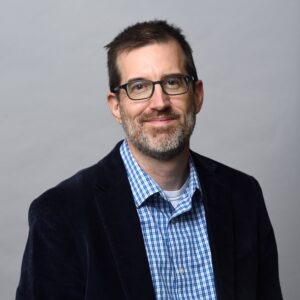This story was written by Elena Conway, and originally appeared on the Giving to Johns Hopkins website as part of their Why I Give series.

Benjamin W. Schafer
Whiting School of Engineering Professor Benjamin Schafer has spent his career applying civil and systems engineering research to solve real-world infrastructure problems. Experiments — such as the first earthquake test on a full cold-formed steel framed building, which he headed in 2013 — have led to dramatic updates to building safety codes and changed the types of buildings engineers can create with lighter, sturdier, more resilient and less expensive materials. He carries this philosophy into the next chapter of his career in two new roles that allow him to devote attention to one of society’s biggest infrastructure challenges: developing, applying, and improving renewable energy technologies.
In December 2020, Schafer was appointed the fourth Willard and Lillian Hackerman Professor of Civil and Systems Engineering. The endowed position was established in 1981 by Margaret Whiting in honor of Willard, Engr ’38, and Lillian Hackerman, and supports outstanding faculty in the department.
Schafer was also recently named the founding director of the Ralph O’Connor Sustainable Energy Institute (ROSEI). Launched in April 2021, ROSEI was made possible with a $20 million gift from the estate of trustee emeritus Ralph S. O’Connor, A&S ’51, and serves as the university’s home for research and education around sustainable energy technologies.
We talked with Schafer to learn more about how these new opportunities shape his future research.
You were recently appointed as the Hackerman Professor of Civil Engineering. What impact do endowed positions like this one have on your work?
I’ve been at Hopkins for my entire 20-year academic career, so I have seen the impact Hackerman recipients have had on the professorship. For example, Tony Dalrymple, the previous recipient, is a good friend and mentor who positively influenced the way people perceive civil engineering beyond the individual research that he did, particularly in his work in the aftermath of Hurricane Katrina. He set a model that this professorship is about more than just excellence in your area of expertise. There’s an expectation that you’re using it on some level as a platform for trying to push society in a better direction.
Having the professorship myself now provides me the resources to, in part, help expand my research from cold-formed steel building structures towards studying and developing renewable energy structures. It opened an opportunity for me at Hopkins to expand my own scope and have an impact on climate change!
What kinds of projects can we expect from ROSEI in the coming years?
ROSEI has picked five major initiatives that are all super exciting, university-wide efforts:
The first one is all about negative carbon technologies and getting rid of huge amounts of carbon and greenhouse gases. The second is focused on personal power through solar energy and battery storage — we want anyone anywhere on the planet to be able to have a simple device that can collect power and be used for all of your personal energy needs. The third one is a wind database, where difficult wind modeling data is shared to improve wind farm efficiency. The fourth one is all about the international policies that we’re going to need to make renewable energy happen; even though ROSEI has a domestic focus, the climate change problem is global. And the last one I’m super excited about is developing a high school-level renewable energy education program so that any student in the nation can learn about renewable energy and really understand the science and social impact.
Each one of those initiatives has a backbone to them that we want to build out further. They are the beginning infrastructure to what we will be building in the coming years at ROSEI.
What do you see as the impact of ROSEI on Hopkins?
Before ROSEI, we had individual researchers who were very interested in energy, but we didn’t have a standing department or center dedicated to it to bring energy scholars together. Having this philanthropic support and investment from the university now allows my interest in wind energy to go from just an interest to a full-blown research effort, and I’m not alone. It’s been really fun to pull together all of these interested faculty members around what they want to do in the renewable energy field. The collaborations that have already emerged in this first year within the engineering school, across this university, and across multiple universities has really been incredible. We’re just on the ground floor of Hopkins being a difference-maker in the climate change challenge and in helping us build a better future for everybody.
Interested in supporting professors in their research? Give today!
